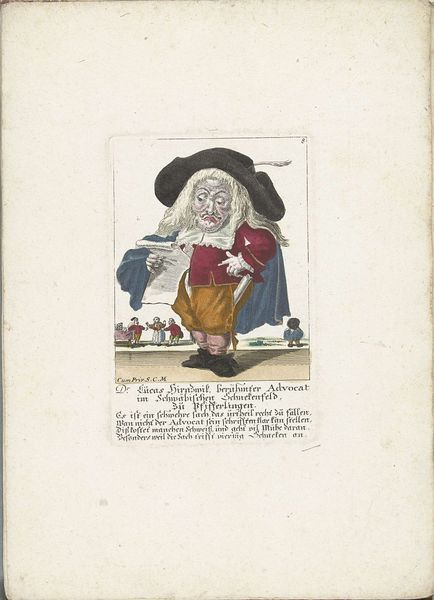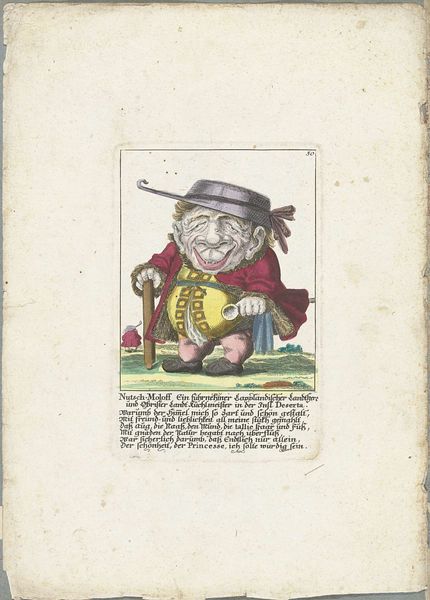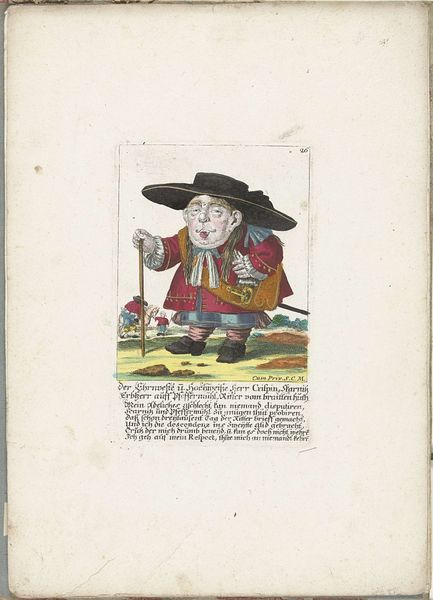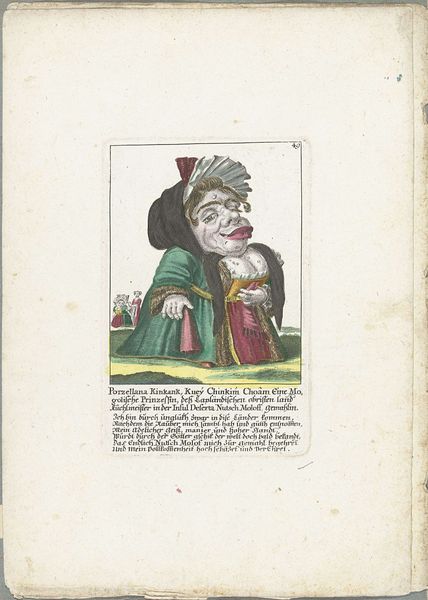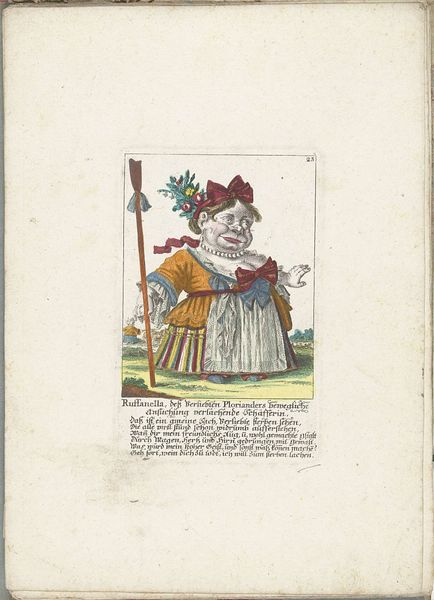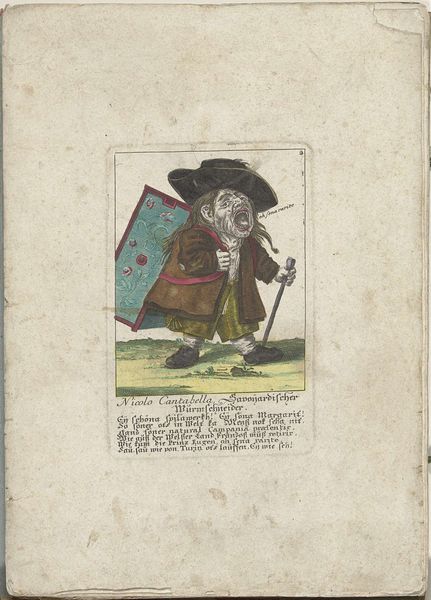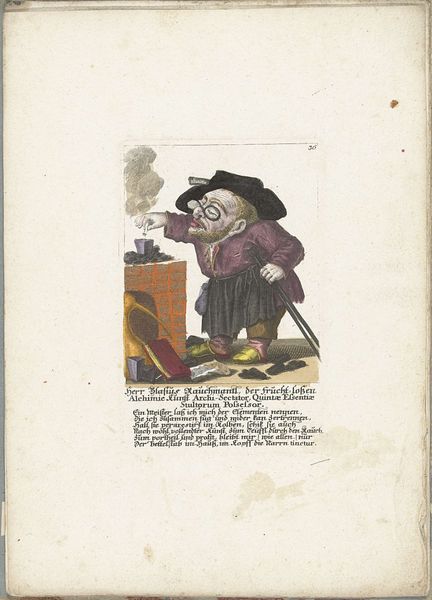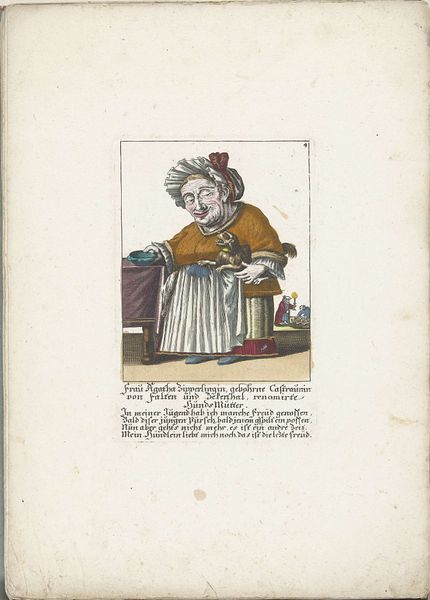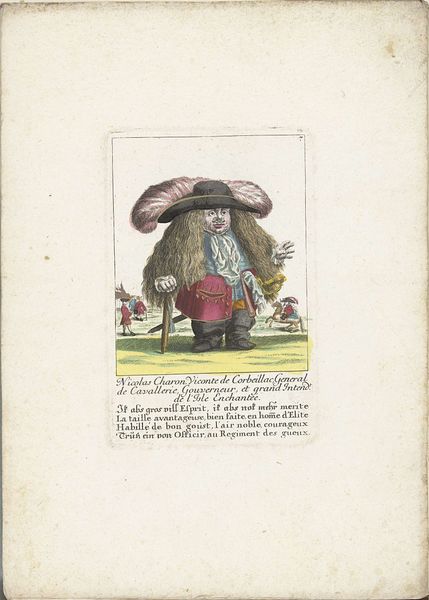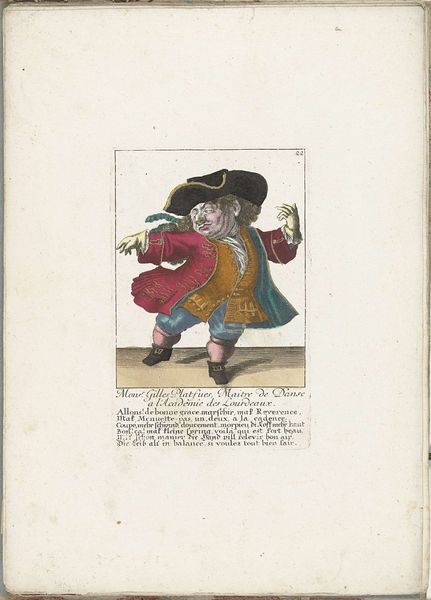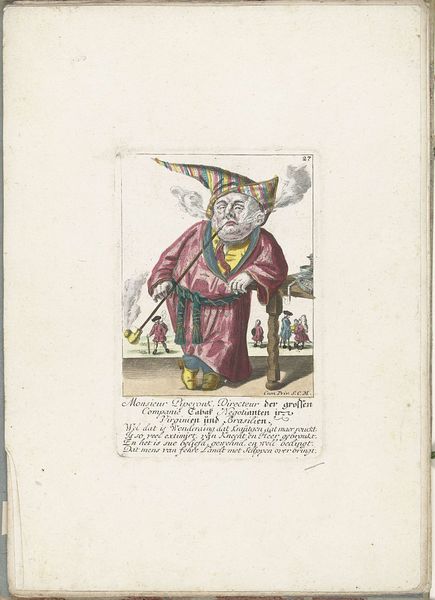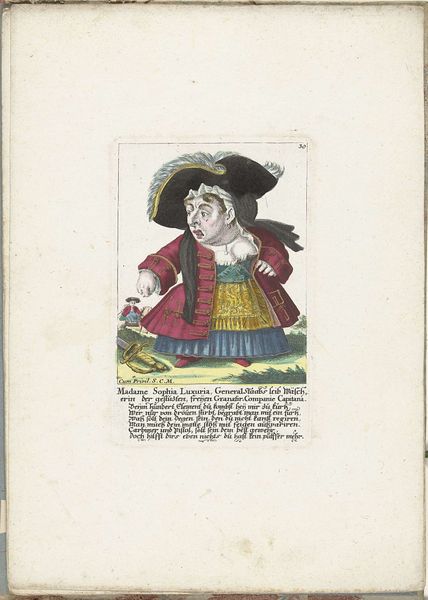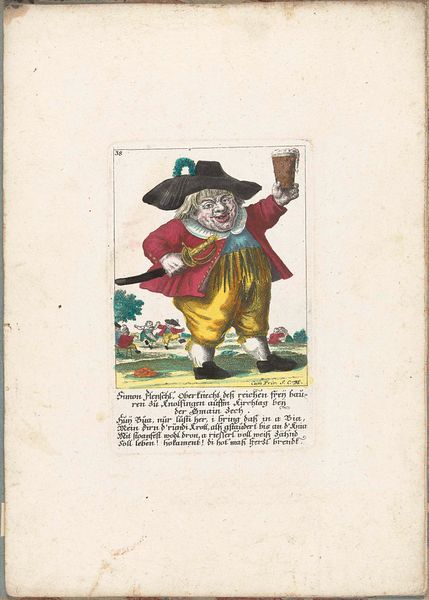
drawing, print, paper, pen, engraving
#
portrait
#
drawing
#
baroque
# print
#
caricature
#
paper
#
pen
#
genre-painting
#
engraving
#
miniature
Dimensions: height 170 mm, width 110 mm, height 320 mm, width 225 mm
Copyright: Rijks Museum: Open Domain
Curator: I'm drawn to the theatricality of this piece, its almost absurd grandeur. This is "De dwerg Veith Schöberl von Gumpendriel, ca. 1710", attributed to Martin Engelbrecht, here at the Rijksmuseum. It's an engraving on paper. What springs to mind for you? Editor: My eyes are immediately glued to his comically oversized head! And the miniature characters prancing behind him, seemingly oblivious to the drama unfolding. What are those squares at his table? Curator: It looks like an engraving highlighted by pen. The materials feel almost like stage props themselves. Engelbrecht exaggerates the subject’s features, bordering on caricature, really accentuating the theatrical genre painting. Veith's stature in relation to his world makes me ponder our perceptions of power and presence. Editor: The production value feels central, as if highlighting labor as a form of commerce, maybe an advertisement of sorts. Also, observe how Engelbrecht plays with the conventions of miniature painting here; It could be interpreted as commenting on societal hierarchies through artistic form. He has turned Schöberl into a commodity, a "specimen" for the consumption of the privileged classes. Curator: Perhaps there’s even humor interjected? Making Schöberl appear monstrous and somehow still claiming to admire this oddity. In those Baroque flourishes and the detailed rendering, one can still perceive a sense of empathy for the human subject, however flawed. Editor: That textual inscription too; is it referring to fabrics of sorts and other wares? His physical difference turns profit—food for thought, definitely. A reminder that art doesn’t exist in a vacuum; labor, material reality and consumption all intertwine, adding layers of interpretation. Curator: Agreed. And within these fine lines and calculated colors, Martin gives a moment to something rare, in 18th-century, Amsterdam life, so even as viewers we're asked, What kind of attention should be paid to the unusual among us? Editor: Quite. Through focusing our attention on these very materials, it prompts me to appreciate how social circumstances directly shaped its creation—and consequently our experience as well.
Comments
No comments
Be the first to comment and join the conversation on the ultimate creative platform.
